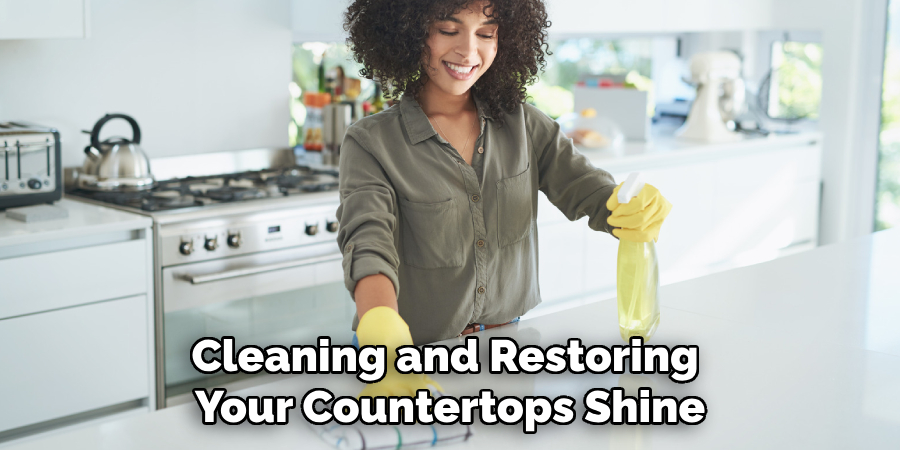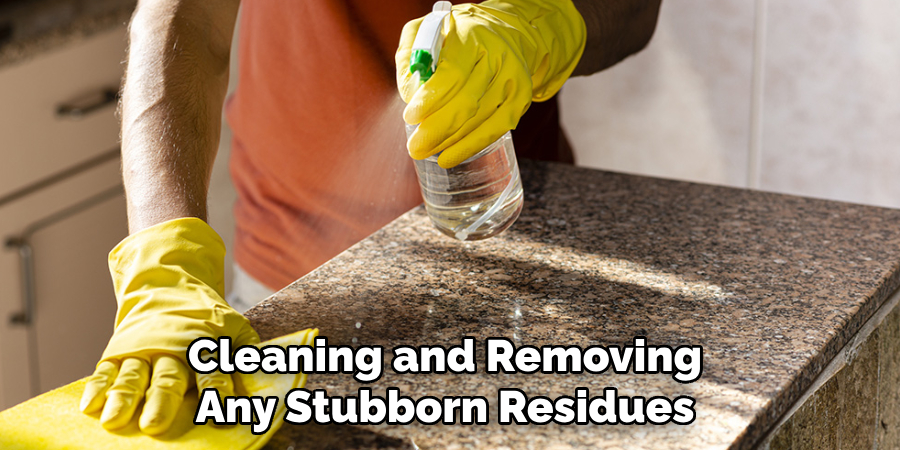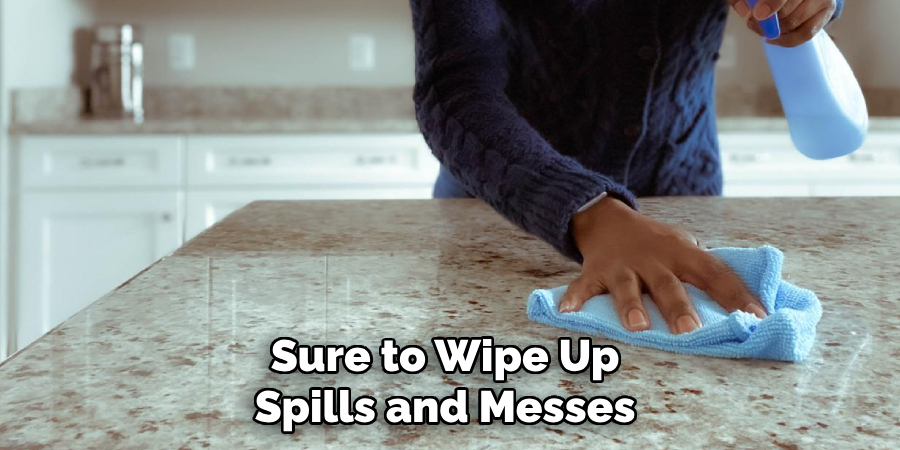Quartz countertops are renowned for their durability and aesthetic appeal, making them a popular choice for both kitchens and bathrooms. However, even the most resilient surfaces can sometimes develop dull spots, which can detract from their natural beauty.

These spots may occur due to various reasons, including prolonged exposure to harsh cleaning agents or buildup from everyday use. Understanding how to effectively tackle this issue will not only enhance the shine and appearance of your countertop but also extend its lifespan and maintain its elegant look.
In this guide on how to fix dull spot on quartz countertop, we’ll explore practical steps to restore your quartz countertop to its original luster.
What is Quartz and Why Does it Dull?
Before we dive into the specifics of fixing dull spots on quartz countertops, let’s first understand what makes this material unique. Quartz is a man-made stone that consists of about 93% natural quartz minerals, with added resins and pigments for coloration. These components give quartz its unbeatable strength and scratch resistance, making it an ideal choice for high-traffic areas.
However, while resilient, quartz is not entirely invincible. Over time, exposure to harsh chemicals like bleach or ammonia can cause discoloration and dullness on the surface. Additionally, food buildup from cooking oils or other liquids can also create a film on the countertop that diminishes its shine and clarity.
Needed Materials
To fix a dull spot on your quartz countertop, you will need the following materials:
Soft Cloth or Sponge:
A soft cloth or sponge is essential for cleaning the countertop without causing any scratches or further damage.
Non-Abrasive Cleaner:
Choose a non-abrasive cleaner specifically designed for quartz surfaces. Avoid using harsh chemicals like bleach, ammonia, or vinegar, as these can cause more damage.
Plastic Scraper:
If the dull spot is caused by a buildup of food or other substances, a plastic scraper can gently remove the residue without scratching the surface.
Microfiber Cloth:
After cleaning and restoring your countertop’s shine, use a microfiber cloth to buff and bring out its natural luster.

8 Step-by-step Guides on How to Fix Dull Spot on Quartz Countertop
Step 1: Prepare Your Materials
Begin by gathering all the materials you need for the restoration process. Make sure you have a soft cloth or sponge, a non-abrasive cleaner specifically formulated for quartz, a plastic scraper, and a microfiber cloth.
Having these items ready and within reach will streamline the cleaning process and ensure you can carry out each step efficiently, minimizing the risk of further damage to your countertop. Keep these materials in a clean area to avoid contamination as you proceed to clean and buff your quartz surface.
Step 2: Clean the Countertop
Start by applying a small amount of the non-abrasive cleaner onto the soft cloth or sponge. Gently wipe the surface of the quartz countertop, focusing on the dull spot and ensuring you cover the affected area thoroughly. Use circular motions to effectively lift and remove any dirt, grime, or other residues that may be contributing to the dullness.
Avoid using too much pressure, as this could risk scratching the surface. Be sure to rinse the cloth or sponge frequently to prevent the spread of dirt. Once the dull spot is clean, wipe the entire countertop to maintain a consistent shine across the surface.
Step 3: Remove Stubborn Residues
If the dull spot is caused by a buildup of food or other substances, use a plastic scraper to gently remove the residue. Be careful not to scrape too hard, as this could cause scratches on the surface. Once you’ve successfully removed the residue, proceed to clean the area with a non-abrasive cleaner to ensure all remnants are lifted off.
It’s essential to address these residues promptly, as they can cause further dulling and may require more intense cleaning methods in the future.
Step 4: Rinse Thoroughly
After cleaning and removing any stubborn residues, rinse the countertop thoroughly with water. Ensure all traces of cleaner and residue are washed off, as these can leave streaks or film on the surface if left behind.
Use a clean cloth or sponge to wipe away any excess water and allow the countertop to dry completely before proceeding to the next step.

Step 5: Apply Quartz Polish
Using a quartz polish is an optional but effective way to restore shine and luster to your countertop. Choose a polish specifically designed for quartz surfaces and follow the instructions on the product. Generally, you’ll need to apply a small amount of polish onto a clean cloth or sponge and buff it onto the countertop in circular motions.
Be sure to cover the entire surface evenly, including the dull spot, for consistent results. After polishing, use a microfiber cloth to buff the surface until it shines.
Step 6: Use Baking Soda and Water
If your countertop has stubborn stains or discoloration that won’t come off with regular cleaning methods, try using baking soda and water. Create a paste by mixing equal parts of baking soda and water, then apply it directly onto the dull spot.
Let it sit for a few minutes before gently scrubbing it with a non-abrasive sponge or cloth. Rinse thoroughly and dry the countertop before proceeding to the next step.
It’s essential to spot test this method first in an inconspicuous area to ensure it does not cause any damage or discoloration.
Step 7: Try a Stain Remover
For particularly stubborn stains or discoloration, you can try using a stain remover specifically designed for quartz surfaces. Follow the instructions on the product carefully and be sure to spot test in an inconspicuous area before applying it onto the dull spot.
Be mindful that some stain removers may contain harsh chemicals, so use caution and protective gear when handling them. Rinse thoroughly and dry the countertop after using a stain remover.
Step 8: Prevention is Key
To prevent future dull spots on your quartz countertop, be sure to wipe up spills and messes as soon as possible. Avoid using harsh chemicals, abrasive cleaners, and tools that could scratch or damage the surface. Regular cleaning with a non-abrasive cleaner and occasional polishing will help maintain the shine and luster of your quartz countertop.
Following these steps on how to fix dull spot on quartz countertop and taking proper care of your quartz countertop will ensure it stays looking beautiful for years to come.

Additional Tips
- Use coasters or trivets under hot dishes to prevent heat damage on quartz countertops.
- Avoid using knives directly on the surface of the countertop. Always use a cutting board.
- Regularly clean your countertop with a non-abrasive cleaner and warm water to maintain its shine and luster.
- For tougher stains, let the non-abrasive cleaner sit for a few minutes before wiping it off.
- Do not use bleach, vinegar, or other acidic or abrasive cleaners on quartz surfaces. These can cause damage and dullness.
- Use a soft-bristled brush to gently scrub dirt and grime off the surface if needed.
- Avoid using colored cleaning sponges as they may transfer dyes onto the countertop and cause discoloration.
- If you notice any chips or scratches on your countertop, contact a professional for repair instead of attempting to fix it yourself.
By following these tips on how to fix dull spot on quartz countertop and regularly maintaining your quartz countertop, you can keep it looking shiny and new for many years to come.
Frequently Asked Questions
Q: Can I Use Vinegar to Clean My Quartz Countertop?
A: No, it’s not recommended to use vinegar or any other acidic or abrasive cleaners on quartz surfaces. These can cause damage and dullness. It’s best to use a non-abrasive cleaner specifically designed for quartz countertops.
Q: Can I Cut Directly on My Quartz Countertop?
A: No, it’s not recommended to cut directly on the surface of a quartz countertop. Always use a cutting board to avoid scratching or damaging the surface.
Q: How Often Should I Polish My Quartz Countertop?
A: It’s not necessary to polish your quartz countertop regularly unless you notice dullness or want to restore shine and luster. If you do choose to polish, it’s recommended to do so every 6-12 months, depending on usage and wear.
Q: How Do I Prevent Dull Spots on My Quartz Countertop?
A: To prevent dull spots, be sure to wipe up spills and messes as soon as possible, avoid using harsh chemicals or abrasive tools, and regularly clean and maintain your countertop with the recommended products and methods.

Conclusion
With these simple steps on how to fix dull spot on quartz countertop, you can easily restore the shine and luster of your quartz countertop without causing any further damage. Remember to always use gentle methods and avoid harsh chemicals for optimal results.
By taking proper care of your quartz countertop, you can enjoy its durability and beauty for years to come. Keep these steps in mind whenever a dull spot appears, and you’ll have your countertop looking as good as new in no time. Happy cleaning!
